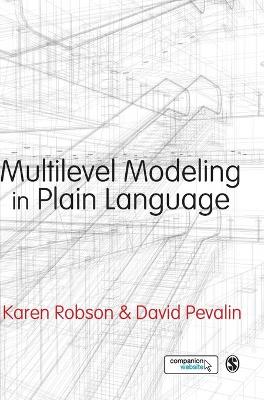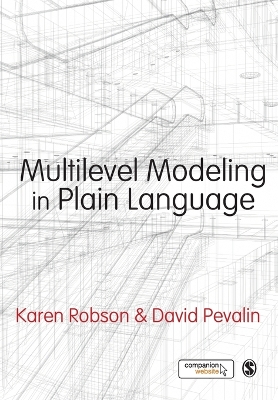Industrial Strength Empirical Modeling
 -15%
portes grátis
-15%
portes grátis
Industrial Strength Empirical Modeling
Kalos, Alex; Smits, Guido; Kotanchek, Mark; Kordon, Arthur
John Wiley and Sons Ltd
10/2018
576
Dura
Inglês
9780471681595
15 a 20 dias
Descrição não disponível.
Figures and Tables. Foreword (Elliott Fisher). Preface: Improvement at the Front Line of Care. Acknowledgments. The Editors. The Contributors. 1: Introducing Clinical Microsystems. Learning Objectives. Microsystems in Health Care. A Broader View of Systems and Microsystems. Research on Microsystems in Health Care. Three Conceptual Imperatives in the Work of Value Improvement. Conclusion. Summary. Key Terms. Review Questions. Discussion Questions. References. Set the following H1 in second color. Chapter One Action Guide. Introduction to the 5Ps. The Clinical Microsystem Process and Structure of the 5Ps Model. External Mapping Tool. Microsystem Assessment Tool (MAT). 2: Partnering with Patients to Design and Improve Care. Learning Objectives. The Aim of Health Care and the Need to Partner with Patients. Conceptual Frameworks for Partnering with Patients. Tactics for Partnering with Patients. Patients as informants and Advisors. Conclusion. Summary. Key Terms. Review Questions. Discussion Questions. References. Set the following H1 in second color. Chapter Two Action Guide. Institute for Family-Centered Care Matrix. Value Stream Mapping. Definitions of Selected Value Stream Mapping Terms. 3: Improving Safety and Anticipating Hazards in Clinical Microsystems. Learning Objectives. Organizational Factors to Promote A Culture of Safety (WHO). Discussion. Definitions. Identification of Medical Errors and Adverse Events. Frequency of Adverse Events and Medical Errors. Conclusion. Summary. Key Terms. Review Questions. Discussion Topics. References. Set the following H1 in second color. Chapter Three Action Guide. 5s Method. Checklists. Failure Mode and Effects Analysis. Rehearsals or Simulations. Mindfulness. The Link Between Safety and the Microsystem. Conclusion. References. 4: Using Measurement to Improve Health Care Value. Learning Objectives. Measuring What Matters at All Levels of the System. Tips and Principles to Foster a Rich information Environment. Designing information Flow to Support High-Value Care. Conclusion. Summary. Key Terms. Review Questions. Discussion Questions. References. Set the following H1 in second color. Chapter Four Action Guide. Patient Value Compass. Balanced Scorecard. Measure What Matters Worksheet. Examples of Data Walls. 5: Starting the Patient's Care in Clinical Microsystems. Learning Objectives. The Entry Functions of Clinical Microsystems. Conclusion. Summary. Key Terms. Review Questions. Discussion Questions. References. Set the following H1 in second color. Chapter Five Action Guide. Process Mapping with Flowcharts. Access Measures and Tools. C.A.R.E. Vital Signs. Reference. 6: Designing Preventive Care to Improve Health. Learning Objectives. The Work of Preventive Health Care. An Action-Based Taxonomy of Preventive Health Services. Conclusion. Summary. Key Terms. Review Questions. Discussion Questions. References. Set the following H1 in second color. Chapter Six Action Guide. Radiology Microsystem Preventive Activity of Mammography. 7: Planning for Responsive and Reliable Acute Care. Learning Objectives. Anticipating the Needs of Acutely Ill Patients. Defining Acute Care Needs of Patients and Families. An Overview of Design Requirements for Acute Care. Advanced Access and Effective Care Transitions Conclusion. Summary. Key Terms. Review Questions. Discussion Questions. References. Set the following H1 in second color. Chapter Seven Action Guide. 8: Engaging Complexity in Chronic Illness Care. Learning Objectives. An Invitation to Complexity. The Experience of Chronic Illness. The Burden of Chronic Illness. The Goals of Chronic Illness Care. Clinical Complexity in Chronic Illness Care. Designing for Complexity Through Alignment of Problems and Practice Solutions. The Nature of Complex Adaptive Systems. The Chronic Care Model. Care Coordinaton and Transitions. Patient Self-Management. Conclusion. Summary. Key Terms. Review Questions. Discussion Questions. References. Set the following H1 in second color. Chapter Eight Action Guide. Star Generative Relationships. Reference. 9: Supporting Patients and Families Through Palliative Care. Learning Objectives. The Need for Palliative Care in Modern America. End-of-Life Experience Yesterday and Today. Principles of Palliative Care. Reducing Variation in End-of-Life Care. Core Processes in Palliative Care. Care Coordination Near the End of Life. Formal Palliative Care and Hospice Programs. Planning for Both Life and Death with Advance Directives. Conclusion. Summary. Key Terms. Review Questions. Discussion Questions. References. Set the following H1 in second color. Chapter Nine Action Guide. Mental Models. Using the Ladder of Inference to Explore Mental Models. Reference. 10: Designing Health Systems to Improve Value. Learning Objectives. From Parts to Whole. New Vision of Integrated Systems to Produce High Value. The Execution Triangle. Leading Change at All Levels. Changing Local Culture. The Path Forward for Making High-Value Health Systems. Summary. Key Terms. Review Questions. Discussion Questions. References. Set the following H1 in second color. Chapter Ten Action Guide. Micro-, Meso-, and Macrosystem Matrix. Name Index. Subject Index.
Este título pertence ao(s) assunto(s) indicados(s). Para ver outros títulos clique no assunto desejado.
Figures and Tables. Foreword (Elliott Fisher). Preface: Improvement at the Front Line of Care. Acknowledgments. The Editors. The Contributors. 1: Introducing Clinical Microsystems. Learning Objectives. Microsystems in Health Care. A Broader View of Systems and Microsystems. Research on Microsystems in Health Care. Three Conceptual Imperatives in the Work of Value Improvement. Conclusion. Summary. Key Terms. Review Questions. Discussion Questions. References. Set the following H1 in second color. Chapter One Action Guide. Introduction to the 5Ps. The Clinical Microsystem Process and Structure of the 5Ps Model. External Mapping Tool. Microsystem Assessment Tool (MAT). 2: Partnering with Patients to Design and Improve Care. Learning Objectives. The Aim of Health Care and the Need to Partner with Patients. Conceptual Frameworks for Partnering with Patients. Tactics for Partnering with Patients. Patients as informants and Advisors. Conclusion. Summary. Key Terms. Review Questions. Discussion Questions. References. Set the following H1 in second color. Chapter Two Action Guide. Institute for Family-Centered Care Matrix. Value Stream Mapping. Definitions of Selected Value Stream Mapping Terms. 3: Improving Safety and Anticipating Hazards in Clinical Microsystems. Learning Objectives. Organizational Factors to Promote A Culture of Safety (WHO). Discussion. Definitions. Identification of Medical Errors and Adverse Events. Frequency of Adverse Events and Medical Errors. Conclusion. Summary. Key Terms. Review Questions. Discussion Topics. References. Set the following H1 in second color. Chapter Three Action Guide. 5s Method. Checklists. Failure Mode and Effects Analysis. Rehearsals or Simulations. Mindfulness. The Link Between Safety and the Microsystem. Conclusion. References. 4: Using Measurement to Improve Health Care Value. Learning Objectives. Measuring What Matters at All Levels of the System. Tips and Principles to Foster a Rich information Environment. Designing information Flow to Support High-Value Care. Conclusion. Summary. Key Terms. Review Questions. Discussion Questions. References. Set the following H1 in second color. Chapter Four Action Guide. Patient Value Compass. Balanced Scorecard. Measure What Matters Worksheet. Examples of Data Walls. 5: Starting the Patient's Care in Clinical Microsystems. Learning Objectives. The Entry Functions of Clinical Microsystems. Conclusion. Summary. Key Terms. Review Questions. Discussion Questions. References. Set the following H1 in second color. Chapter Five Action Guide. Process Mapping with Flowcharts. Access Measures and Tools. C.A.R.E. Vital Signs. Reference. 6: Designing Preventive Care to Improve Health. Learning Objectives. The Work of Preventive Health Care. An Action-Based Taxonomy of Preventive Health Services. Conclusion. Summary. Key Terms. Review Questions. Discussion Questions. References. Set the following H1 in second color. Chapter Six Action Guide. Radiology Microsystem Preventive Activity of Mammography. 7: Planning for Responsive and Reliable Acute Care. Learning Objectives. Anticipating the Needs of Acutely Ill Patients. Defining Acute Care Needs of Patients and Families. An Overview of Design Requirements for Acute Care. Advanced Access and Effective Care Transitions Conclusion. Summary. Key Terms. Review Questions. Discussion Questions. References. Set the following H1 in second color. Chapter Seven Action Guide. 8: Engaging Complexity in Chronic Illness Care. Learning Objectives. An Invitation to Complexity. The Experience of Chronic Illness. The Burden of Chronic Illness. The Goals of Chronic Illness Care. Clinical Complexity in Chronic Illness Care. Designing for Complexity Through Alignment of Problems and Practice Solutions. The Nature of Complex Adaptive Systems. The Chronic Care Model. Care Coordinaton and Transitions. Patient Self-Management. Conclusion. Summary. Key Terms. Review Questions. Discussion Questions. References. Set the following H1 in second color. Chapter Eight Action Guide. Star Generative Relationships. Reference. 9: Supporting Patients and Families Through Palliative Care. Learning Objectives. The Need for Palliative Care in Modern America. End-of-Life Experience Yesterday and Today. Principles of Palliative Care. Reducing Variation in End-of-Life Care. Core Processes in Palliative Care. Care Coordination Near the End of Life. Formal Palliative Care and Hospice Programs. Planning for Both Life and Death with Advance Directives. Conclusion. Summary. Key Terms. Review Questions. Discussion Questions. References. Set the following H1 in second color. Chapter Nine Action Guide. Mental Models. Using the Ladder of Inference to Explore Mental Models. Reference. 10: Designing Health Systems to Improve Value. Learning Objectives. From Parts to Whole. New Vision of Integrated Systems to Produce High Value. The Execution Triangle. Leading Change at All Levels. Changing Local Culture. The Path Forward for Making High-Value Health Systems. Summary. Key Terms. Review Questions. Discussion Questions. References. Set the following H1 in second color. Chapter Ten Action Guide. Micro-, Meso-, and Macrosystem Matrix. Name Index. Subject Index.
Este título pertence ao(s) assunto(s) indicados(s). Para ver outros títulos clique no assunto desejado.




